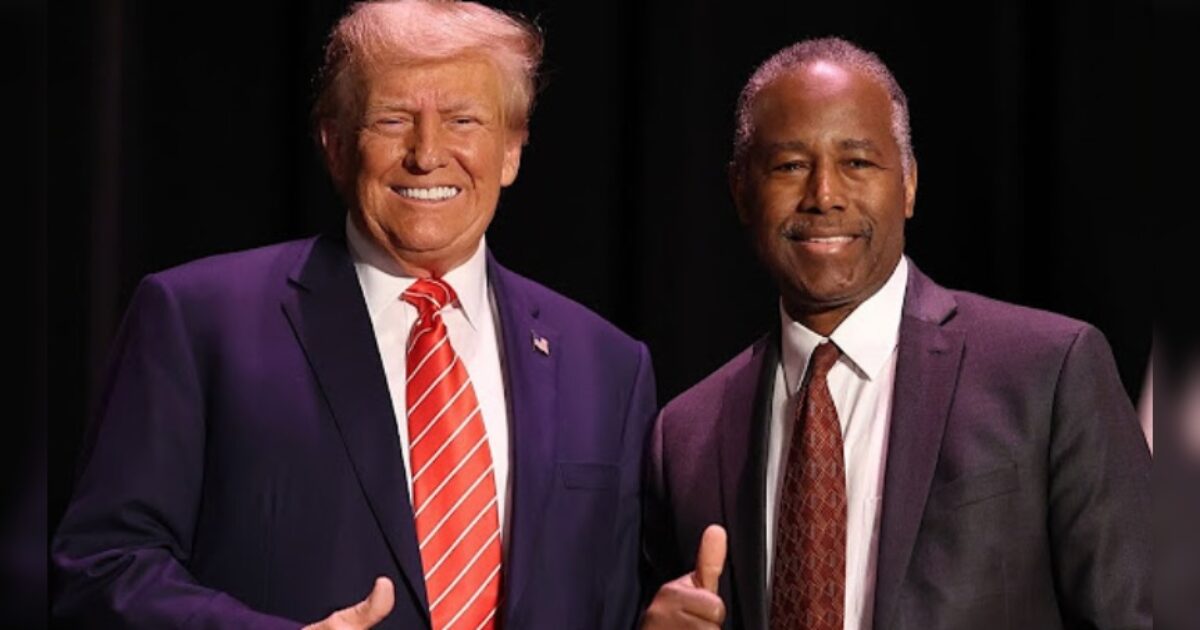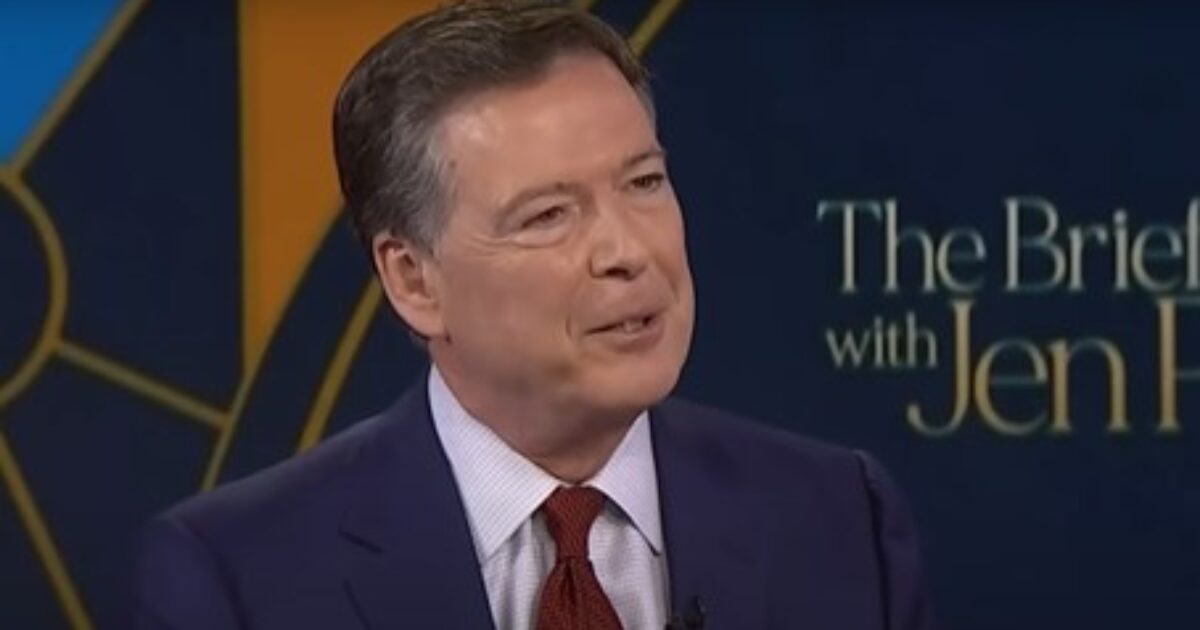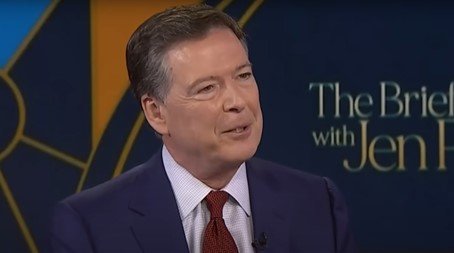Politics
Federal CIO outlines 16 operating principles for IT leaders

The departments of Interior, Treasury and Environmental Protection Agency have recently named new chief information officers, while the Energy Department is now on its third CIO since January.
None of the new CIOs have significant federal agency experience, and it’s unclear if any have even been CIOs before.
The turnover among agency CIOs, which currently includes seven positions that are either vacant or have acting CIOs, has been highly unusual, even at the start of a new administration. A couple agencies like the Defense Department and the Department of Veterans Affairs are waiting presidential nominations.
This may be the reason why Federal CIO Greg Barbaccia sent out his 16 principles of what it takes to be an agency CIO earlier this week.
Greg Barbaccia is the federal CIO.
“The Trump-Vance administration is not business as usual. This document below outlines a new operating standard for how we lead, serve, and build in federal technology. It’s not a checklist or a compliance exercise— it’s a culture shift. One rooted in urgency, ownership, and the belief that government tech can and must deliver at the highest level. Whether you sit in the Office of the Federal CIO or lead technology for an agency, this is the bar. Read it carefully. Share it with your teams. And hold yourselves — and each other — to it,” Barbaccia wrote in the email obtained by Federal News Network.
The principles are exactly what you’d expect them to be ranging from trust as the foundation to before you act understanding your mission, system and impact to leading when it’s time and follow when it’s not.
“Choosing to serve in this office means choosing to build. It means choosing accountability over comfort, clarity over confusion and outcomes over process,” Barbaccia wrote. “This document outlines the expectations we hold for ourselves — and each other as we modernize the digital infrastructure of the United States. This is not a typical government shop. We are here to fix what’s broken and build what’s missing. The standards below are how we ensure that mission is fulfilled.”
Emails to OMB seeking further comments on the Barbaccia’s principles were not returned.
Mixed reactions to prinicples
Former and current federal officials who’ve reviewed a copy of the CIO principles had mixed reactions.
One current federal official said the message came across as patronizing, noting that many cabinet agency CIOs lead organizations of thousands.
“The CIO also said the message also seems to insinuate that career civil servants do not already embody these values, which is an extremely insulting assumption,” said the federal official.
Another current technology executive appreciated that the email continued to promote the consistent idea that federal IT is non-partisan.
“More importantly, words are the easy part. What will be truly important is how this gets translated into budget priorities, guidance documents and most critically, the treatment of federal employees,” the executive said. “Since the start of the administration, we’ve seen dedicated, highly qualified people forced out, had their integrity questioned or the value of their work diminished. The contrast between those actions and this message will be clear to those of us still in federal IT. Trust is a two way street. Can he earn back the trust of those of us still working in federal IT? That’s the key question.”
A former federal technology executive said while their initial reaction was similar, when they thought about it a little more critically and considered all the new technology leaders coming into government, this type of message is clearly aimed at them.
“If you’ve been a CIO and been around for some time, what’s being said in inherent in the job. There is nothing really new. I think as a new CIO and with so much turnover, I read it as he needs to wrangle the Federal CIO Council and set expectations for agency CIOs,” the former federal executive said. “Many of the new CIOs do not seem to have strong management or leadership experience, so the Federal CIO says ‘I expect you to work with the business,’ that knowledge tends to come through when you get into the Senior Executive Service (SES) and when you go through executive core qualifications (ECQs). I think he thinks he has to train the new CIOs.”
New tech execs are new to the CIO role
It’s hard to tell by the LinkedIn profiles how much large scale leadership experience these new CIOs have. For instance — Interior’s new CIO, Paul McInerny, came from Space X and was a software engineer previously.
Treasury’s new CIO is Sam Corcos. He came to the government under DOGE where he worked at the IRS. Corcos is a former co-CEO of health care startup called Levels.
At EPA, Carter Farmer is the new CIO and has some government experience, having worked at the U.S. Institute of Peace for the last seven years as the director of IT systems and solutions. He also came over with the DOGE team.
It seems many agencies are using the new authorities the Office of Personnel Management extended in February to hire these new CIOs. OPM changed the rules to let agencies make CIOs positions SES general reserve instead of career reserve, meaning they are easier to fill with private sector experts.
Current and former federal technology executives say the way to change culture and create a team isn’t by email. It’s unclear if Barbaccia plans on following up on these principles with meetings or “off-sites” with the CIO Council. These executives say that driving these principles through the CIO Council would serve him well.
“This reads like I know better than all of you and none of you have been doing these things and I’m going to tell you what to do. It’s not that these things are bad, it’s the way he is going about it,” said another former federal technology official. “One of mistakes in last administration was not having the CIO Council meet face-to-face. It just didn’t build the team work. One of things I’d do is meet in person and create the team.”
The former official added creating culture and building teams is creating a conversation about shared values and asking the agency CIOs for their input on how best to build the culture Barbaccia is seeking to establish.
“It’s tone deaf in how it comes across because he doesn’t start by saying anything about some of you have been around for a long time and know this, and he just wants to make clear his shared values. It’s more like he is saying, ‘you all are broken and this is what we are going to do to fix you,’” said the former official. “If he believes folks aren’t doing these things, you aren’t going to create change through email. I would read this as he’s trying to fix the government, but I’m not sure he understands the role of the federal CIO which is has to lead through influence.”
Federal CIO Greg Barbaccia’s operating standards for agency CIO:
Trust is the foundation: “Every success we’ll have is downstream of trust. Trust among teammates, between agencies, with the public, and with our partners. Trust is extended to you on day one and it is yours to lose. You will be exposed to sensitive information: interagency cybersecurity gaps, budget vulnerabilities, contract disputes, employee performance data and more. With transparency comes responsibility. Don’t lie. Don’t omit to mislead. Know when to speak and when to withhold. If in doubt, do not tout. Confused? Ask a lead. No one gets in trouble for asking. Breach of trust is the one failure from which there is no guaranteed recovery. Everything else is coachable.”
Exercise judgment relentlessly: “Judgment is not instinct—it’s a learned skill. Learn it. Practice it. Good judgment requires understanding both intent (why are we doing this?) and context (what are the circumstances?). If either is unclear, you are expected to ask until it is not.”
Before you act: Understand the mission; Understand the system; Understand the impact. “No matter your title, you are empowered to improve how we think, decide and execute—by bringing good judgment to the table.”
Own the outcome: “Imagine every system failure is your fault. Act accordingly. Don’t limit yourself to your job description. If you see a problem, you own the solution Default to action, not passivity. Push beyond your comfort zone. This is how we shift the culture of federal IT from slow and reactive to bold and effective. This office only works if everyone behaves like a founder.”
Show your work: “Transparency is the fuel of accountability and shared learning. We are not interested in black box decisions or vague plans. Document your logic. Share your assumptions. Make it easy for others to follow. Ask the same of your colleagues. This creates a ‘hive mind’ where decisions improve through scrutiny and learning compounds across the team.”
Truth over comfort: We are truth-seeking above all. The truth is often inconvenient, uncomfortable, or career challenging—but we pursue it anyway. Call out broken processes. Identify policy contradictions. Challenge assumptions, even from the top. We don’t sugarcoat: the stakes are too high. This is a mission-driven team, not a compliance-driven bureaucracy.”
Default to positive intent: “Start every interaction assuming your colleagues are here for the right reasons. This reduces friction, improves collaboration and supports high bandwidth communication. If something feels off, assume miscommunication before malice—and talk it out. Extend the benefit of the doubt. Expect it in return.”
Burnout is a national security risk: “You can’t deliver if you’re depleted. And you’re not serving the mission by pretending everything is fine. Know the signs: cynicism, disengagement, irritability [and] fatigue. Speak up early. Leads are here to help you deal if it’s too much. Leads are responsible for managing workloads and expectations. Preventing burnout requires intentional investment in wellbeing. We’re in this for the long haul—act accordingly.
Feedback is a civic duty: “High-performing teams give and receive feedback constantly—and constructively. Feedback should be frequent, actionable and kind. Don’t wait for a performance review. Don’t talk behind backs. Say it directly, or escalate it responsibly. We’re not here to coast. We’re here to grow.
Label the problem: “Call a problem what it is—don’t avoid it to protect egos, maintain surface harmony, or wait for someone else to say it. Call out technical debt. Flag a failed procurement strategy. Surface ambiguous goals. Name the ‘elephants in the room.’ Nothing gets better until someone identifies what’s broken. Be that someone.”
Commitments are sacred: “This office runs on trust and delivery. If you say you’ll do something, it gets done—on time, to spec, or renegotiated early. Don’t ghost. Don’t leave others guessing. If priorities shift, communicate fast. Everyone has too much to do. That’s why clarity and follow through matter.”
Lead when it’s time, follow when it’s not: “Leadership isn’t about hierarchy—it’s about ownership. When it’s your turn to lead, take full responsibility for vision, planning, communication, and outcomes. When you’re not leading: Contribute fully. Voice dissent during planning. Execute the final plan with conviction. Mission first doesn’t mean consensus first. It means clarity, commitment and speed.”
Proactivity over permission seeking: “We’re here to build new systems—not wait for new instructions. If you need information, go find it. If something’s unclear, ask fast. If bad news is coming, surface it early. Don’t assume someone else is handling it. Don’t hope the issue will resolve on its own. You are the system now.”
Cross-functional thinking is mandatory: “Government doesn’t need more people who only care about their own swim lane. We need generalists who can spot patterns, challenge assumptions, and think holistically. Learn the language of other functions. Ask how policy affects engineering. Understand how tech affects procurement. Think like a product manager, a security officer and a strategist. Our edge is interdisciplinary thinking applied at speed.”
Forward deploy to earn trust and surface truth: “The mission doesn’t live in conference rooms at headquarters. It lives in the systems, networks and workflows of the 100+subagencies that make up the federal government. If we’re not embedded in their world, we can’t claim to understand their challenges—let alone solve them. That’s why we forward deploy. Whether it’s a field office, a regional data center, or a program team buried under legacy systems and outdated contracts, our job is to meet them where they are. Proximity creates perspective. The best policy and architecture decisions are informed by on-the-ground reality. Trust is earned face-to-face. When agency teams see that we show up, listen, and help without judgment— they start picking up the phone. Influence requires empathy. Transformation doesn’t happen from the top down. It spreads when we understand lived pain points and tailor solutions that work in real world environments. You don’t need to be asked to visit a sub-agency. You should volunteer. Show up early. Stay late. Ask the hard questions— and the basic ones. This is not a remote control mission. It’s a hands-on, forward-leaning effort to unlock the latent potential of government systems by working alongside those who maintain and endure them every day. If we want to modernize the system, we have to walk through it.”
This office only works if you’re all in: “We are building a new operating model for government. One that delivers faster, secures smarter and serves better. That won’t happen with part-time passion or halfhearted effort. This job isn’t easy. It’s not always fun. But it matters— immensely. We are here to serve the public and leave behind a better government than we found. That’s the standard.”
Your best is our best: “Your commitment, passion, and drive will deliver success. I am most thankful for all you do!”
The post Federal CIO outlines 16 operating principles for IT leaders first appeared on Federal News Network.
Politics
President Trump Taps Dr. Ben Carson for New Role — A HUGE Win for America First Agenda

Dr. Ben Carson is the newest member of the Trump administration.
On Wednesday, former Secretary of the Department of Housing and Urban Development, Ben Carson, was sworn in as the national adviser for nutrition, health, and housing at the U.S. Department of Agriculture.
Agriculture Secretary Brooke Rollins shared that Carson’s role will be to oversee Trump’s new Big Beautiful Bill law, which aims to ensure Americans’ quality of life, from nutrition to stable housing.
After being sworn in, Carson shared, “Today, too many Americans are suffering from the effects of poor nutrition. Through common-sense policymaking, we have an opportunity to give our most vulnerable families the tools they need to flourish.”
WATCH:
BREAKING Dr. Ben Carson has been sworn in as the National Nutrition Advisor to Make America Healthy Again
THIS IS A HUGE WIN pic.twitter.com/Dr5AsSDkRM
— MAGA Voice (@MAGAVoice) September 24, 2025
Per USDA:
Today, U.S. Secretary of Agriculture Brooke L. Rollins announced that Dr. Benjamin S. Carson, Sr., M.D., was sworn in as the National Advisor for Nutrition, Health, and Housing at the U.S. Department of Agriculture (USDA).
“There is no one more qualified than Dr. Carson to advise on policies that improve Americans’ everyday quality of life, from nutrition to healthcare quality to ensuring families have access to safe and stable housing,” said Secretary Rollins.
“With six in ten Americans living with at least one chronic disease, and rural communities facing unique challenges with respect to adequate housing, Dr. Carson’s insight and experience is critical. Dr. Carson will be crucial to implementing the rural health investment provisions of the One Big Beautiful Bill and advise on America First polices related to nutrition, health, and housing.
“As the U.S. Secretary of Housing and Urban Development in the first Trump Administration, Dr. Carson worked to expand opportunity and strengthen communities, and we are honored to welcome him to the second Trump Administration to help lead our efforts here at USDA to Make America Healthy Again and ensure rural America continues to prosper.”
“Today, too many Americans are suffering from the effects of poor nutrition. Through common-sense policymaking, we have an opportunity to give our most vulnerable families the tools they need to flourish,” said Dr. Ben Carson. “I am honored to work with Secretary Rollins on these important initiatives to help fulfill President Trump’s vision for a healthier, stronger America.”
On Sunday, Dr. Carson was one of the many speakers at the memorial service of the late TPUSA founder Charlie Kirk.
During the memorial service, Carson highlighted that Kirk was shot at 12:24 p.m. and then continued to share the Bible verse John 12:24, which reads, “Verily, verily, I say unto you, Except a corn of wheat fall into the ground and die, it abideth alone: but if it die, it bringeth forth much fruit.”
WATCH:
Ben Carson reads John 12:24 at the Charlie Kirk’s funeral. Charlie was shot at 12:24.
It reads: “Very truly I tell you, unless a kernel of wheat falls to the ground and dies, it remains only a single seed. But if it dies, it produces many seeds”
God is moving and speaking. pic.twitter.com/0ZbVTAwwYl
— Danny Botta (@danny_botta) September 21, 2025
The post President Trump Taps Dr. Ben Carson for New Role — A HUGE Win for America First Agenda appeared first on The Gateway Pundit.
Politics
LEAKED MEMO: Deep State Prosecutors in the Eastern District of Virginia Claim There Isn’t Enough Evidence to Convict Comey Amid Reports of Imminent Indictment


On Wednesday evening, disgruntled officials in the Eastern District of Virginia leaked contents of a memo explaining why charges should not be brought against James Comey.
As reported earlier, former FBI Director James Comey is expected to be indicted in the Eastern District of Virginia in the next few days.
Comey will reportedly be charged for lying to Congress in a 2020 testimony about whether he authorized leaks to the media.
Officials in the Eastern District of Virginia are still fighting to stop Comey from being charged after Trump fired US Attorney Erik Siebert.
President Trump last week fired Erik Siebert as the US Attorney for the Eastern District of Virginia because he refused to bring charges against Letitia James, Comey, Schiff and others.
On Saturday evening, President Trump announced that he had appointed Lindsey Halligan – his personal attorney who defended him against the Mar-a-Lago raid – as US Attorney for the Eastern District of Virginia.
Now, with just days to go before the statute of limitations runs out to charge Comey for lying during a September 30, 2020 testimony, Lindsey Halligan is reportedly gearing up to indict Comey.
Prosecutors reportedly gave newly sworn-in Halligan a memo defending James Comey and explaining why charges should not brought against the fired FBI Director.
Per MSNBC’s Ken Dilanian:
Two sources familiar with the matter tell me prosecutors in the EDVA US attorney‘s office presented newly sworn US attorney Lindsey Halligan with a memo explaining why charges should not be brought against James Comey, because there isn’t enough evidence to establish probable cause a crime was committed, let alone enough to convince a jury to convict him.
Justice Department guidelines say a case should not be brought unless prosecutors believe it’s more likely than not that they can win a conviction beyond a reasonable doubt.
Two sources familiar with the matter tell me prosecutors in the EDVA US attorney‘s office presented newly sworn US attorney Lindsey Halligan with a memo explaining why charges should not be brought against James Comey, because there isn’t enough evidence to establish probable…
— Ken Dilanian (@DilanianMSNBC) September 24, 2025
The post LEAKED MEMO: Deep State Prosecutors in the Eastern District of Virginia Claim There Isn’t Enough Evidence to Convict Comey Amid Reports of Imminent Indictment appeared first on The Gateway Pundit.
Politics
Nearly 8 in 10 Voters Say the United States is in Political Crisis After the Assassination of Charlie Kirk

Nearly eight in ten voters believe that the United States is in a political crisis in the wake of the assassination of conservative icon Charlie Kirk.
According to a Quinnipiac University national poll of registered voters released on Wednesday, a massive 93 percent of Democrats, 84 percent of independents, and 60 percent of Republicans said the nation is in a political crisis.
“The Kirk assassination lays bare raw, bipartisan concerns about where the country is headed,” Quinnipiac University Polling Analyst Tim Malloy said of the poll results.
Quinnipiac reports:
Seventy-one percent of voters think politically motivated violence in the United States today is a very serious problem, 22 percent think it is a somewhat serious problem, 3 percent think it is a not so serious problem, and 1 percent think it is not a problem at all.
This is a jump from Quinnipiac University’s June 26 poll when 54 percent thought politically motivated violence in the United States today was a very serious problem, 37 percent thought it was a somewhat serious problem, 6 percent thought it was a not so serious problem, and 2 percent thought it was not a problem at all.
Nearly 6 in 10 voters (58 percent) think it will not be possible to lower the temperature on political rhetoric and speech in the United States, while 34 percent think it will be possible.
Over half, 54 percent, of voters believe the US will see increased political violence over the next few years. Another 27 percent said they think it will stay “about the same,” while just 14 percent believe it will ease.
A 53 percent majority also said they are “pessimistic about freedom of speech being protected in the United States.”
Surprisingly, a 53 percent majority also believes the current system of democracy is not working.
“From a perceived assault on freedom of speech to the fragility of the democracy, a shudder of concern and pessimism rattles a broad swath of the electorate. Nearly 80 percent of registered voters feel they are witnessing a political crisis, seven in ten say political violence is a very serious problem, and a majority say this discord won’t go away anytime soon,” Malloy added.
The vast majority, 82 percent, said the way that people discuss politics is contributing to the violence.
“When asked if political discourse is contributing to violence, a rare meeting of the minds…Republicans, Democrats, and independents in equal numbers say yes, it is,” Malloy said.
The survey was conducted from September 18 to 21 among 1,276 registered voters with a margin of error of +/- 3.3 percentage points.
The post Nearly 8 in 10 Voters Say the United States is in Political Crisis After the Assassination of Charlie Kirk appeared first on The Gateway Pundit.
-

 Entertainment6 months ago
Entertainment6 months agoNew Kid and Family Movies in 2025: Calendar of Release Dates (Updating)
-

 Entertainment3 months ago
Entertainment3 months agoBrooklyn Mirage Has Been Quietly Co-Managed by Hedge Fund Manager Axar Capital Amid Reopening Drama
-
Tech6 months ago
The best sexting apps in 2025
-

 Entertainment5 months ago
Entertainment5 months agoKid and Family TV Shows in 2025: New Series & Season Premiere Dates (Updating)
-

 Tech7 months ago
Tech7 months agoEvery potential TikTok buyer we know about
-
Tech7 months ago
iOS 18.4 developer beta released — heres what you can expect
-

 Tech7 months ago
Tech7 months agoAre You an RSSMasher?
-

 Politics7 months ago
Politics7 months agoDOGE-ing toward the best Department of Defense ever





